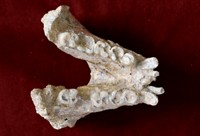Advertisement
Grab your lab coat. Let's get started
Welcome!
Welcome!
Create an account below to get 6 C&EN articles per month, receive newsletters and more - all free.
It seems this is your first time logging in online. Please enter the following information to continue.
As an ACS member you automatically get access to this site. All we need is few more details to create your reading experience.
Not you? Sign in with a different account.
Not you? Sign in with a different account.
ERROR 1
ERROR 1
ERROR 2
ERROR 2
ERROR 2
ERROR 2
ERROR 2
Password and Confirm password must match.
If you have an ACS member number, please enter it here so we can link this account to your membership. (optional)
ERROR 2
ACS values your privacy. By submitting your information, you are gaining access to C&EN and subscribing to our weekly newsletter. We use the information you provide to make your reading experience better, and we will never sell your data to third party members.
Pharmaceuticals
Method determines plausible forms of ancestral blood clotting protein
Resurrected sequences have better pharmaceutical properties than modern human factor VIII
by Celia Henry Arnaud
October 3, 2016
| A version of this story appeared in
Volume 94, Issue 39
Ancestral sequence reconstruction (ASR) is a computational method in which the sequences of closely related proteins from different species are used to infer ancient protein sequences within a predicted evolutionary tree. Christopher B. Doering of Emory University, Eric A. Gaucher of Georgia Tech, and coworkers have used ASR to improve the pharmaceutical properties of coagulation factor VIII, a protein essential to blood clotting (Nat. Biotechnol. 2016, DOI: 10.1038/nbt.3677). Deficiency in factor VIII is the cause of hemophilia A, and infusion of the protein is used to treat the disease. Unfortunately, many people who receive therapeutic factor VIII develop antibodies to it. Plus, recombinant human factor VIII is hard to produce in cell culture manufacturing systems. By using ASR, Doering and coworkers constructed a family tree of factor VIII ancestors from which they selected 14 proteins for evaluation. Several of these ancestral proteins were produced more efficiently, were more potent, were less immune-reactive, and remained active longer than modern human factor VIII. Doering’s group is now working with the ancestral sequences as potential gene therapy agents, as well as extending the general ASR approach to other pharmaceutically relevant blood coagulation factors.



Join the conversation
Contact the reporter
Submit a Letter to the Editor for publication
Engage with us on Twitter